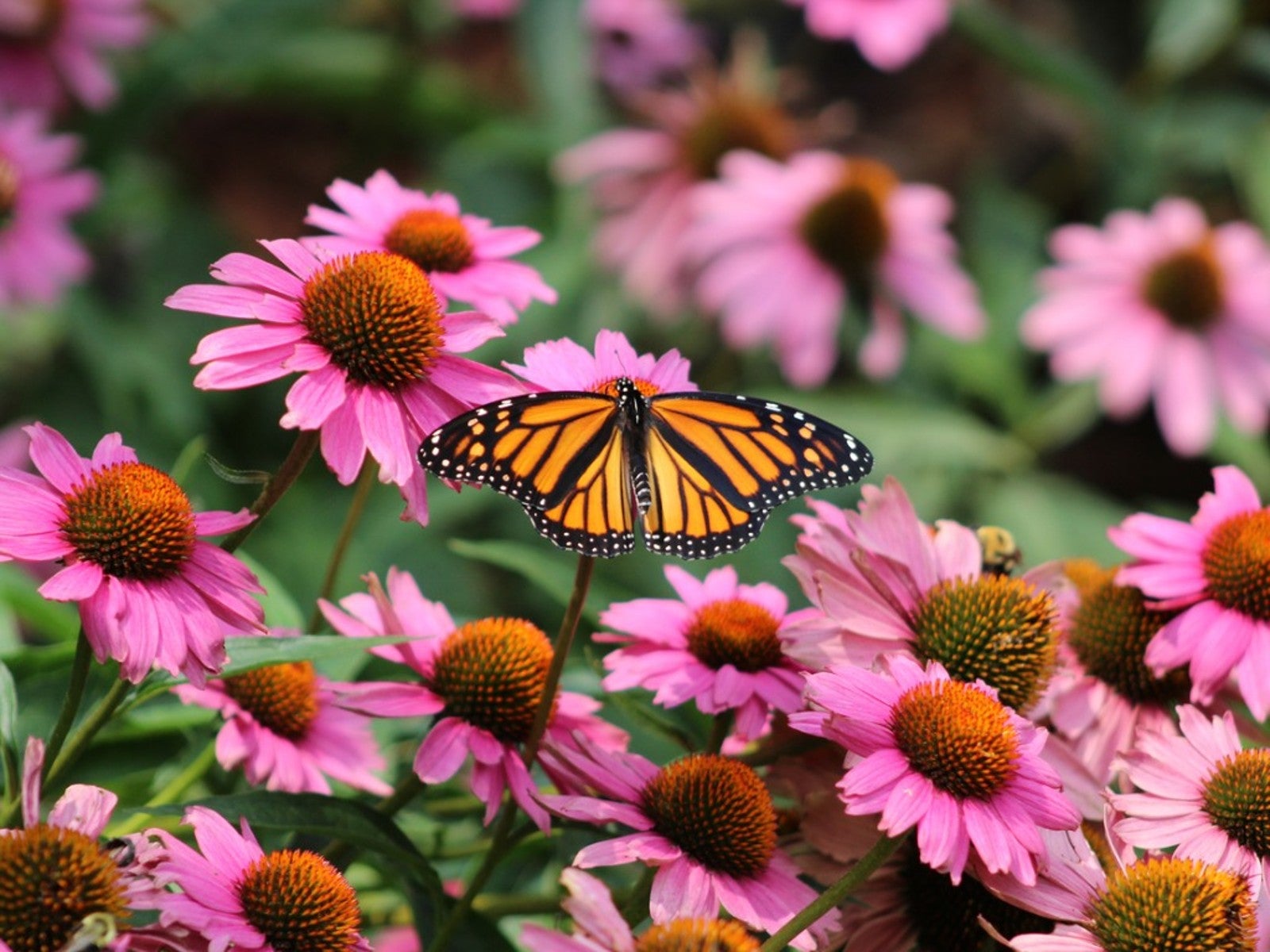How To Plant In Drifts For Pollinators


According to scientists, our bee population is in danger. This creates a problem for our food supply as well as other plants in nature. Planting in drifts is one way to encourage bees and other pollinators. What is drift planting? Many pollinators seek food from plants in the same species. So when you place many plants in the same species they can more readily spot their favorite food sources.
Planting perennials in drifts not only draws the attention of pollinators, but it is a pleasing arrangement to our eyes. Groups of the same plant provide swaths of color that are appealing. When we plant in drifts, the large groupings pop with color and bring in insects like bees.
What is Drift Planting?
Drift planting is the use of just a few species but massed in groupings. It often follows a color scheme, but may also be developed from a variety of sizes and flower types. Key is the use of at least 3 of each species. Planting 3 or more of a type creates a natural setting that attracts pollinators. The effect is just like that seen in the wild where plants self sow or send out new plants. They are localized to one site and provide an obvious area of nectar for bees and other insects. Drift planting sees the concentration of the plant mostly in the center and fading out at the edges, where the variety begins to blend with other flora. It is a design concept often used by professional landscapers. The limited selection of plants must be considered carefully to provide the nutrients pollinators crave.
How to Plant in Drifts
The first consideration is plant variety. This depends upon whether you are attracting bees or all pollinators. Even bats sip from night blooming flowers and help pollinate, so if these are your target, ensure plants that flower in the evening. For the most diverse visiting pollinators, plants with compound flowers are best. They have multiple small florets that are available for many insects. Large flowers are also very attractive and make a huge impact on the landscape scheme. Select plants that flower at different times of the season, so pollinators have food from spring until winter. Bees see hues of blue best and favor scented blooms. Other pollinators are less picky and will enjoy any color of flower.
Plants to Attract Pollinators
Plants like red maple aren't generally considered flowering plants, but they bloom early and are an important food supply for bees. Witch hazel blooms in fall but there is also a spring blooming variety that flowers in February or March. Planting these types of foundation trees or shrubs as part of a drift garden helps ensure a food supply for pollinators through the season. Flowers for pollinators might be:
- Goldenrod
- Blue Lupine
- Blazing Star
- Sweet Pepperbush
- Butterfly Bush
- Elderberry
- Sweetspire
- Blueberry
- Rose of Sharon
- Honeysuckle
- Dogwood
- Milkweed
- Joe Pye
- Bee Balm
- Columbine
Almost any flowering plant will be attractive to many pollinators, but it is best to avoid hybrid plants. They may be sterile or have a minimal nectar supply.
Sign up for the Gardening Know How newsletter today and receive a free copy of our e-book "How to Grow Delicious Tomatoes".

Bonnie Grant is a professional landscaper with a Certification in Urban Gardening. She has been gardening and writing for 15 years. A former professional chef, she has a passion for edible landscaping.